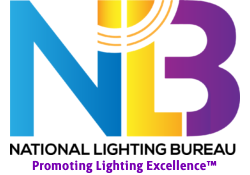Case Histories: Industrial/Warehouse Lighting
Eye-opening Benefits of Proper Lighting
Dollars Saved Can Really Add Up
The way some plant managers act, you’d think lighting was installed to see how little energy it could use. It would be like an engineer running up to race car driver AJ Foyt and saying, “Good news! I’ve just improved the fuel efficiently on the race car by 25%. We’ll save $100 a race.”
“That’s great,” ol’ AJ would probably drawl. “But what about top speed? What about acceleration?” AJ wouldn’t lose sight of his reason for having a race car in the first place–to win races. Saving $100 a race isn’t worth much if it lowers the chances for winning a $1 million purse.
The same is true for lighting. In shops, it is installed to give people the viewing conditions they need to support good eye-hand coordination–so they can work faster with fewer rejects. It’s there to prevent accidents and the hardships, paperwork, and replacement costs involved, including higher insurance premiums and OSHA citations. It’s there to speed retrieval from storage. In short, light is for people, and the better the light, the better people can perform. The better they can perform, the more the plant saves.
It doesn’t make much sense to jeopardize maximum performance benefits for the sake of energy savings of comparatively little value, especially when, through proper lighting, a shop can have both–top performance and less energy waste.
To achieve High-Benefit Lighting®, work with someone who really understands the concept, and design lighting for the specific spaces, tasks, and workers involved. Only after the design is complete should you seek to minimize energy consumption, by eliminating waste. Low energy consumption is not necessarily a virtue. Efficient energy consumption is the real goal.
Bright idea
Sensors, capacitors save money
At Superior Die Set Corp, Oak Creek, WI, occupancy sensors installed in lavatories automatically extinguished lighting within a predetermined time, encouraging company employees to keep their “visits” somewhat brief. An occupancy sensor was also installed in the disk drive area, so lights turned on only when people were present, which was seldom.
In drafting areas, new ballasts and current-limiting capacitors provided better seeing conditions. Drafters were able to reduce the time required to produce a finished drawing and to also reduce the number of errors made. Better lighting also reduced absenteeism because the drafters and engineers who used the facility experienced fewer headaches and less eyestrain. Downtime fell by four hours per month, saving the company reportedly $6000 per year. The number of errors was reduced and the modifications created energy savings and other O&M benefits.
This article was reprinted from the March 1999 issue of Metlfax Magazine.
